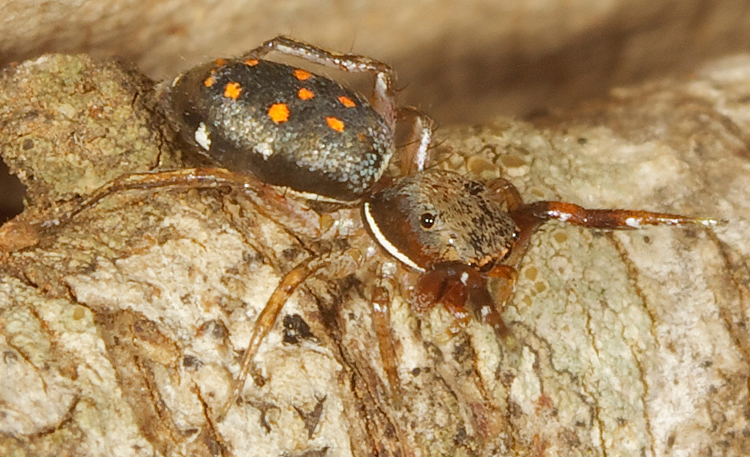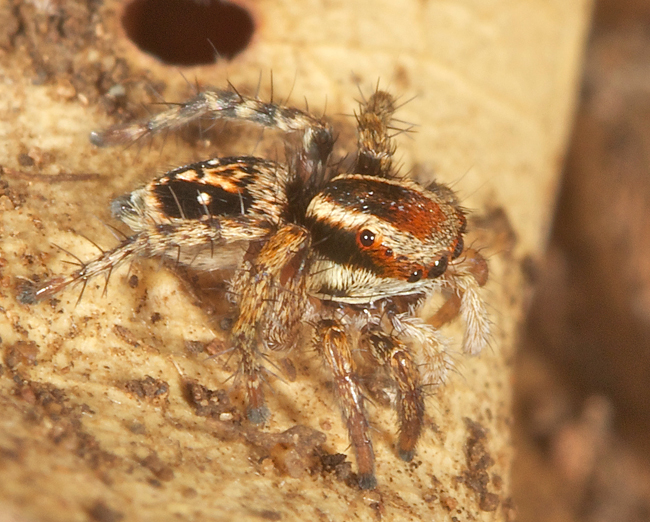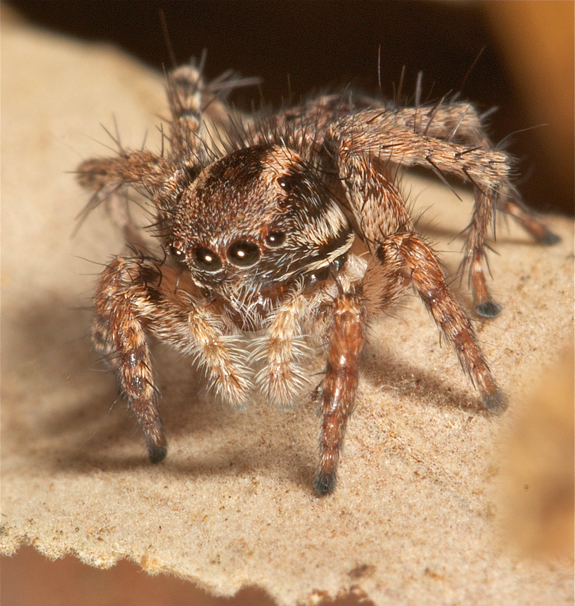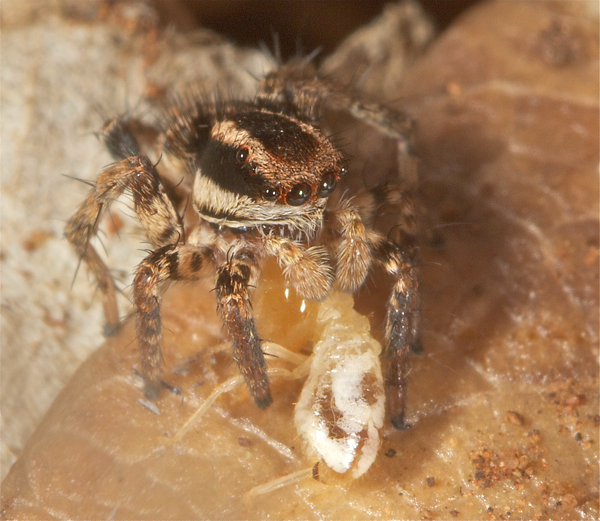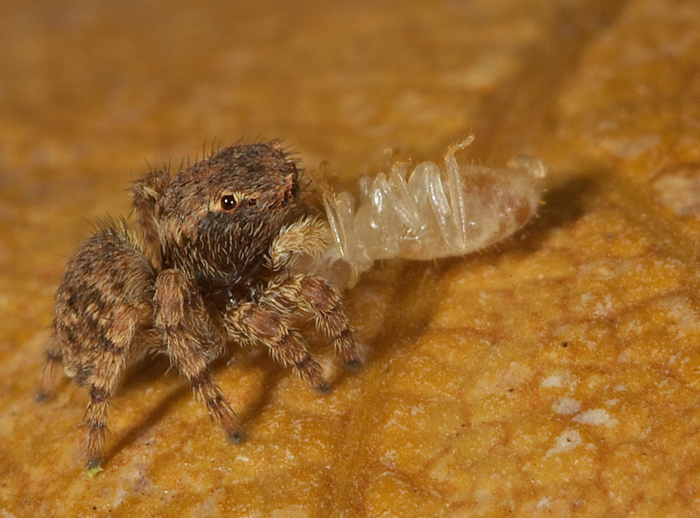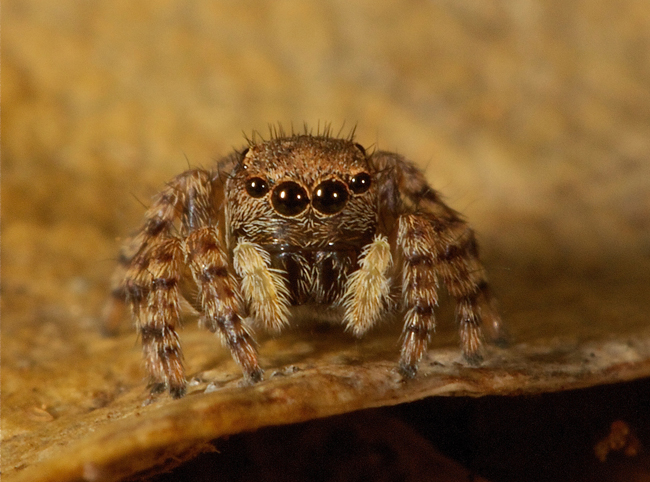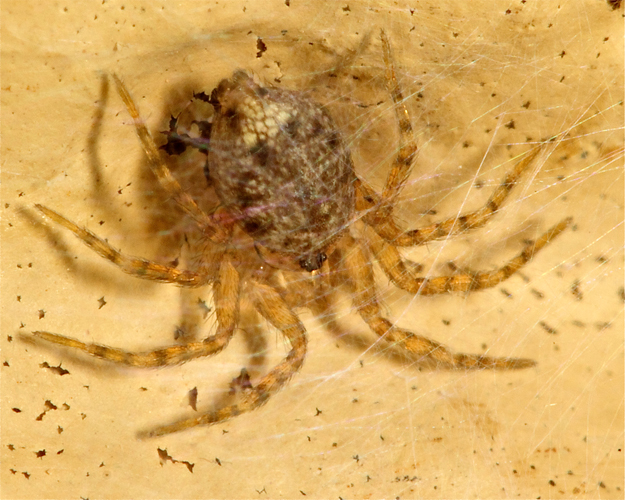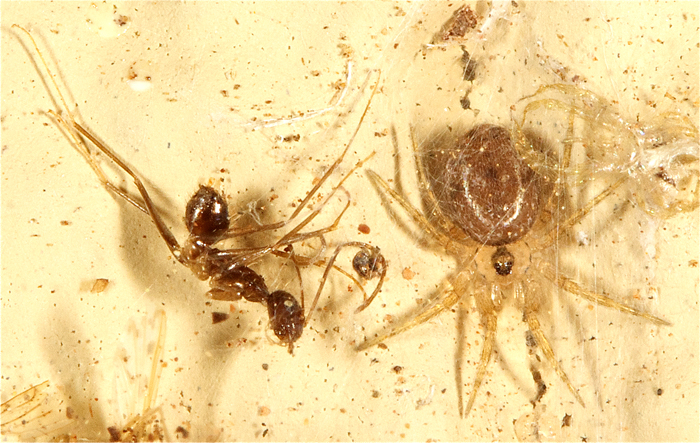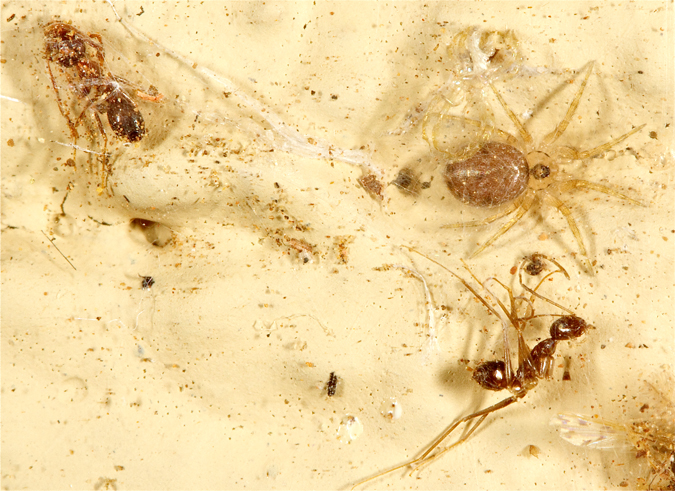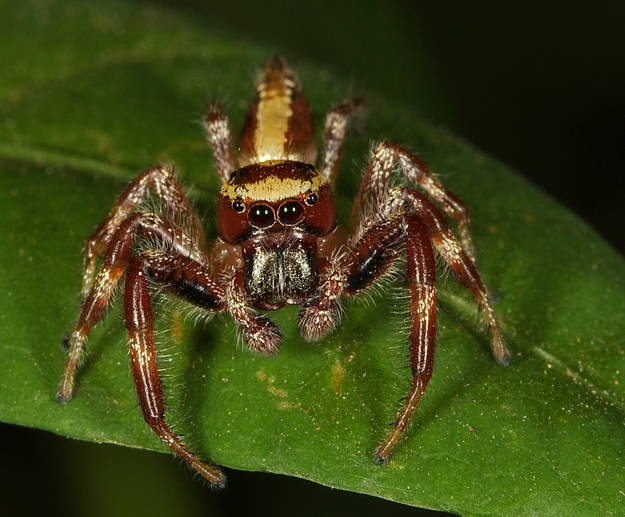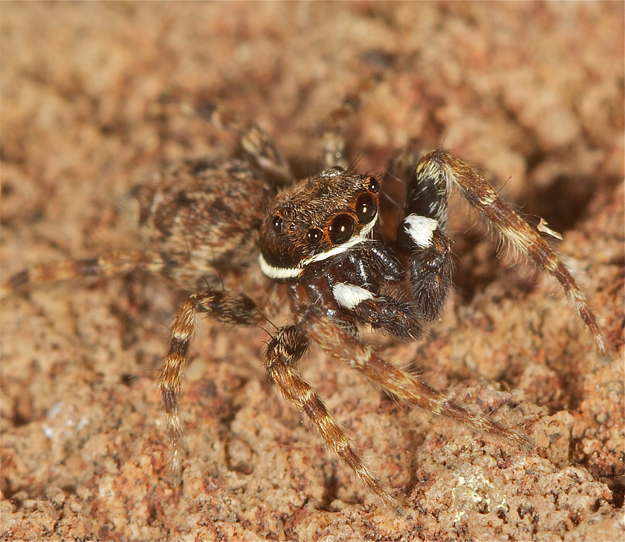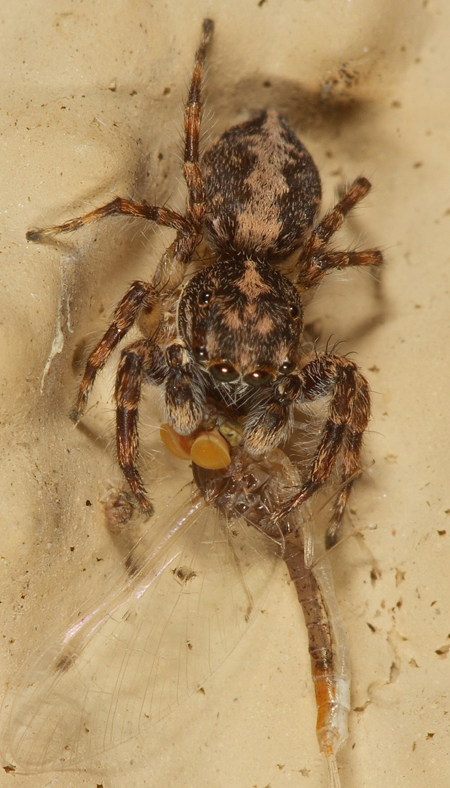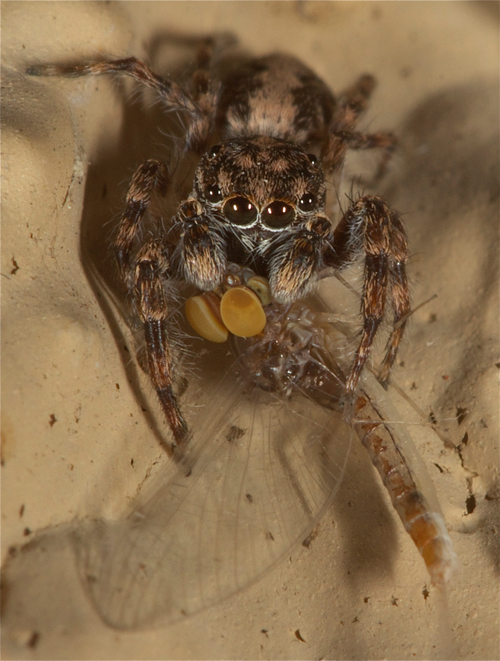Jumping Spider Phintella aequipes (Peckham & Peckham, 1903)
Family: Salticidae

Adult male, Kruger National Park

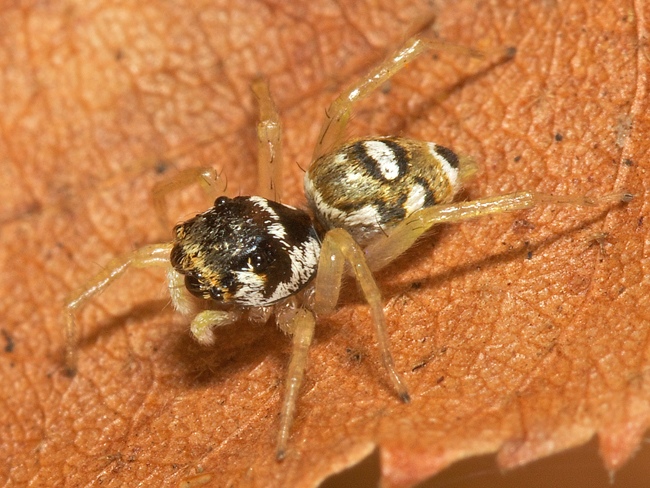
Female, Kruger
by ExF
Description
Measurements (male/female): Carapace length 1.8–2.3/1.7–1.8, width 1.4–1.8/1.4, height 0.9 - 1.0 / 0.8. Abdomen length 1.7–2.0/1.7–1.9, width 1.3–1.7/1.5–1.9. Eye field length 0.9 - 1.0 / 0.9, anterior width 1.2–1.4/1.2, posterior width 1.1–1.3/1.1.
Male
Carapace rather high, slightly pear-shaped, broadest posteriorly, dark brown. Eye field black, near eyes long brown bristles, anterior median eyes surrounding by fawn scales. White scales form pair of spots in front of posterior lateral eyes and narrow line at base anterior median eyes. Some light scales scattered over thoracic area, large whitish patch on foveal area and two streaks along lateral/posterior margins of thoracic part. Clypeus low, dark. Chelicerae long, brownish, promargin with two small teeth, retromargin with single tooth. Gnathocoxae and labium dark brown with paler tips, sternum dark. Abdomen ovoid, narrowing posteriorly, dark brown with white central patch and pair of small submarginal marks. Dark and colourless hairs cover dorsum. Venter dark, greyish brown. In some specimens coloration of abdomen lighter (bleached?), then dorsum yellowish brown with longitudinal darker streaks, but central light patch always marked. Spinnerets brownish. First leg longest, dark brown, only metatarsus paler. Legs II–IV yellow, but apical section of femora, patellae and tibiae brownish. Spines long, brown, leg hairs brownish. Pedipalps small, brownish, sparse light scales on femur and tibia. Single tibial apophysis, short and thin, triangular bulb with large posterior lobe, embolus short spike-like.
Female
Body form similar to male, but carapace lower, chelicerae smaller and first leg shorter. Coloration lighter, white areas form complicated pattern on carapace and abdomen. Sternum brown, mouthparts as in male. Venter of abdomen light, sometimes with median brown streak. In bleached specimens carapace densely covered with whitish hairs, abdomen yellowish with darker streaks. All legs very light, whitish yellow. Epigyne with strongly sclerotized posterior edge. Copulatory openings in central depression, seminal ducts short, receptacles spherical.
Habitat
A shrub-dweller (91% of records), recorded in dense leafy places, such as hedges, creepers, clumps and bushes, on over twenty different plant species, some indigenous, some exotic, both di- and mono- cotyledons. It was normally found on the ventral surfaces (84%) of smooth leaves, though adults, especially males, were seen on dorsal surfaces. Adult males wandered during the mating season and were occasionally found on the walls of the house.
Prey.
Five records; 4 on tiny flies and one on a tiny wasp.
Nest
Nests were found on 5 different plants. One female was inside a nest on a palm leaf, with 19 eggs, below silken coverings, another was inside a hard little ‘cup’ in a dry
Erythrina seed-pod, while a third (15–20 eggs) was on the underside of a grenadilla (Passiflora) leaf. Females remained in nests with hatchlings. Several retreats were found: 1) between two adjacent leaves pinned together with silk, one on a palm, one on a low guava tree; 2) under dry leaves pinned to walls; 3) in rolled leaves, both moist and dry. On warm nights several adult females have been observed outside retreats, hanging by 3–4 cm threads from the undersurfaces of leaves, with their legs drawn in.
Behaviour.
This species is fairly gregarious, living in close proximity to each other. Four adult males were seen simultaneously on one small Agapanthus plant, all near a subadult female.
Phenology
Juveniles hatch from November to August, through both hot-wet and cool-dry seasons, but not in the hot-dry season. Adults are present from September–May but not from May–August i.e. they are absent during the cool-dry season. Adult males were observed with sub-adult females in February and March.
Distribution
Widely distributed in southern Africa; reported also from Kilimanjaro in Tanzania.

Oct. 2012, Kruger National Park


This spider might be an undiscribed
Phintella sp. or also
Phintella aequipes
10952_Wesolowska_&_Cumming_2008_Ann_58_167_230.pdf
(Wesolowska, W. & Cumming, M. S. (2008). Taxonomy and natural history of a species rich assemblage of jumping spiders (Araneae: Salticidae); a long-term study of a suburban site in Zimbabwe. Annales Zoologici, Warszawa 58: 167-230.)
